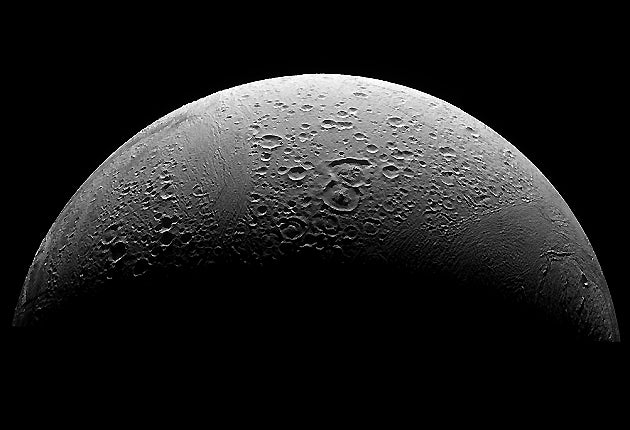The Independent's journalism is supported by our readers. When you purchase through links on our site, we may earn commission.
Does Saturn moon hide watery caverns - and life?

Your support helps us to tell the story
From reproductive rights to climate change to Big Tech, The Independent is on the ground when the story is developing. Whether it's investigating the financials of Elon Musk's pro-Trump PAC or producing our latest documentary, 'The A Word', which shines a light on the American women fighting for reproductive rights, we know how important it is to parse out the facts from the messaging.
At such a critical moment in US history, we need reporters on the ground. Your donation allows us to keep sending journalists to speak to both sides of the story.
The Independent is trusted by Americans across the entire political spectrum. And unlike many other quality news outlets, we choose not to lock Americans out of our reporting and analysis with paywalls. We believe quality journalism should be available to everyone, paid for by those who can afford it.
Your support makes all the difference.Saturn's icy moon Enceladus could contain watery underground caverns, forming a potential home for alien life, say scientists.
German researchers have found salt - a signature chemical for seawater - in ice grains from vapour jets streaming out of surface cracks, providing the strongest evidence yet of a liquid water reservoir beneath the moon's frozen crust.
A US team said the amount of salt they had detected using a different method suggested an earlier theory that water was boiling explosively into the vacuum of space via geysers was wrong, and evaporation was occurring quite slowly.
Both studies were published in the journal Nature.
One explanation for the slower evaporation may be that water is emerging from pressurised chambers below the so-called tiger stripe fractures in the moon's surface, said John Spencer of the Southwest Research Institute in Boulder, Colorado.
"Our picture of its sub-surface must now be expanded to include the possibility of misty ice caverns floored with pools and channels of salty water, lurking beneath the tiger stripes," he wrote in a commentary on the two scientific papers.
"What else may lurk in those salty pools, if they exist, remains to be seen."
The Cassini spacecraft first discovered huge plumes erupting from fissures near the south pole of Enceladus in 2005, sparking speculation of a vast underground ocean spewing vapour through giant Yellowstone-like geysers.
Since then, scientists have debated whether this meant that Enceladus (pronounced en-SELL-ah-dus), with a diameter of only 310 miles (500 km), was hiding a reservoir of liquid water. It is one of about 60 moons of the ringed planet Saturn.
Frank Postberg of the Max Planck Institute for Nuclear Physics in Heidelberg said the presence of sodium salts was compelling evidence, indicating salty minerals were washed out from rock on Enceladus in the same way oceans absorb salt on Earth.
He and colleagues reported they had found salty grains of ice after analysing data from Cassini's cosmic dust detector as it flew through Saturn's outermost ring, where Enceladus orbits.
Whether or not Enceladus harbours life remains a mystery. But the evidence of liquid water, coupled with heat near the moon's South Pole, suggests it is possible.
"If you have this large amount of water in contact with a rocky core and you have heat, then you have very good conditions," Postberg said in a telephone interview.
"On top of that we measured a slightly alkaline pH value, which is very good for the formation of complex organic molecules."
Scientists hope to find out more when Cassini makes two more close fly-bys of Enceladus in November.
Join our commenting forum
Join thought-provoking conversations, follow other Independent readers and see their replies
Comments